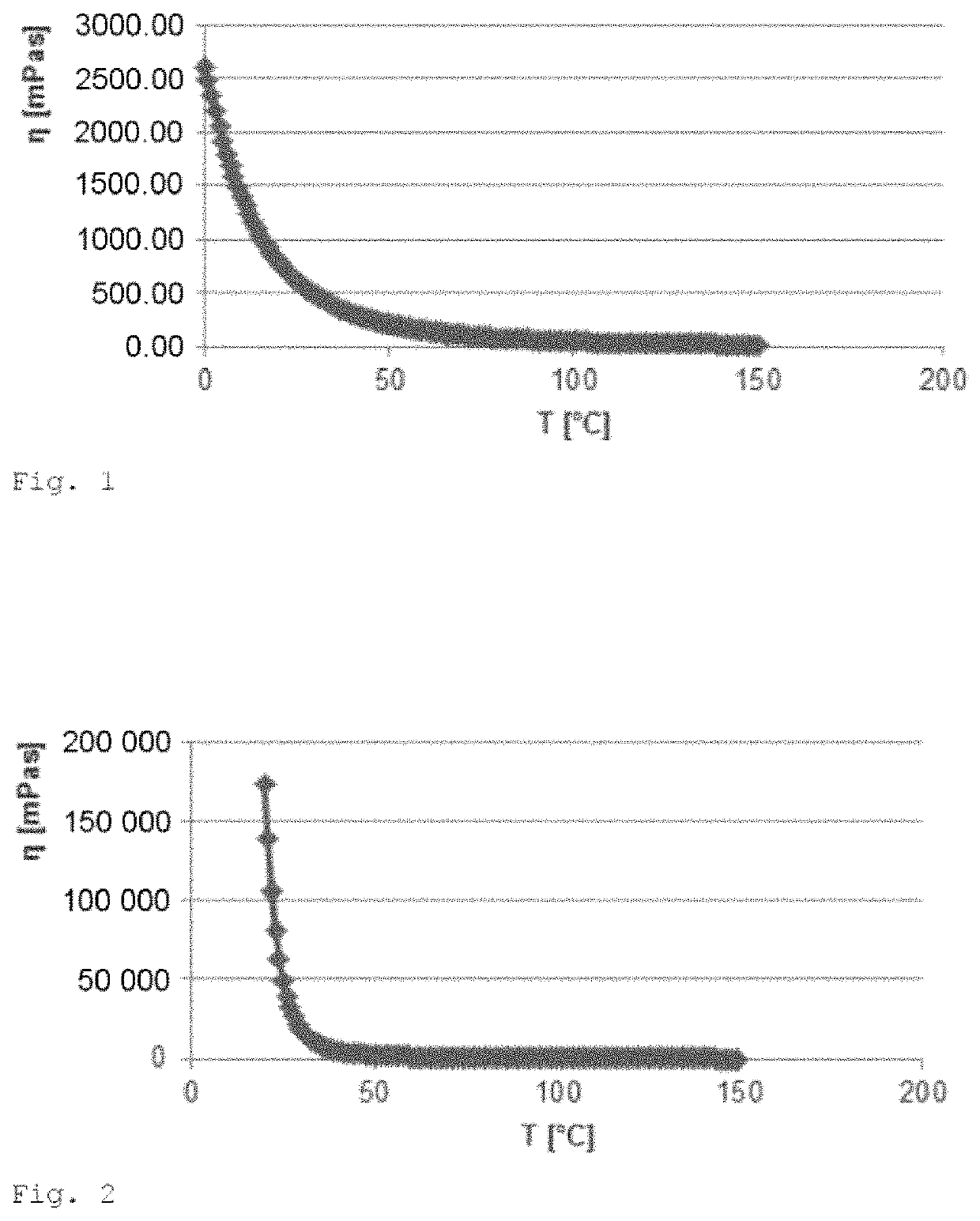Method for preparing urea-functional siloxanes
a technology of urea-functional siloxanes and urea-functional alkoxysilanes, which is applied in the field of process for preparing urea-functional organopolysiloxanes, can solve the problems of difficult to impossible, low polarity of the function, and inability to introduce it into the siloxane framework, etc., and achieves the effect of not being able to achieve the circuitous route via the base-catalyzed
- Summary
- Abstract
- Description
- Claims
- Application Information
AI Technical Summary
Benefits of technology
Problems solved by technology
Method used
Image
Examples
example 1
[0107]In a manner analogous to comparative example 1, 90 g of the aminopolysiloxane (0.026 mol of amine) were reacted with 4.5 g (0.027 mol) of 2-methoxyphenyl carbamate (prepared from guaiacol and chlorosulfonyl isocyanate as described by Singh, R. et al., ACS Catalysis 6(10), 6520-6524 (2016)) for 2 hours at 80° C. and 1 hPa. According to the 1H-NMR spectrum in CDCl3 (reference signal of the undeuterated part: 7.24 ppm), the conversion of the amine functions was quantitative (comparison of the signals of the corresponding CH2—N groups: amine: 2.63 ppm, urea: 3.12 ppm). An oil pump vacuum (4 hPa) was subsequently applied and the residue was heated for 30 minutes at 130° C. while passing a stream of nitrogen (2-5 l / h) through it. 82.7 g of a colorless, clear oil as a residue and 3.8 g of liquid distillate, in the 1H-NMR spectrum of which 2-methoxyphenol (guaiacol) was detected as main component (D6-acetone, signal groups at 7.5 ppm, 6.8 ppm, 6.9 ppm), were isolated. The 1H-NMR spect...
example 2
[0109]In a manner analogous to example 1, 90 g (0.11 mol of amine) of an amino-functional polysiloxane of the average formula Me3SiO1 / 2:Me2SiO2 / 2:MeSi(CH2CH2CH2—NH—CH2CH2—NH2)O2 / 2=2:17.8:1.1 were reacted with 22.1 g (=0.13 mol) of 2-methoxyphenyl carbamate and heat treated. Complete conversion of the amine functions into the corresponding urea functions could be confirmed by the absence of the signals between 2.5 and 2.9 ppm and the new signals between 3.0 and 3.5 ppm in the 1H-NMR spectrum (CDCl3).
example 3
[0110]In a manner analogous to example 2, 90 g (0.11 mol of amine) of an amino-functional polysiloxane of the average formula Me3SiO1 / 2:Me2SiO2 / 2:MeSi (CH2CH2CH2—NH—CH2CH2—NH2)O2 / 2=2:17.8:1.1 were reacted with 11 g (=0.065 mol) of 2-methoxyphenyl carbamate and heat treated. 48% conversion of the amine functions into the corresponding urea functions could be confirmed from the integrated ratio of the signals between 2.5 and 2.9 ppm and the new signals between 3.0 and 3.5 ppm in the 1H-NMR spectrum (CDCl3).
PUM
| Property | Measurement | Unit |
|---|---|---|
| temperature | aaaaa | aaaaa |
| temperature | aaaaa | aaaaa |
| temperature | aaaaa | aaaaa |
Abstract
Description
Claims
Application Information
 Login to View More
Login to View More - R&D
- Intellectual Property
- Life Sciences
- Materials
- Tech Scout
- Unparalleled Data Quality
- Higher Quality Content
- 60% Fewer Hallucinations
Browse by: Latest US Patents, China's latest patents, Technical Efficacy Thesaurus, Application Domain, Technology Topic, Popular Technical Reports.
© 2025 PatSnap. All rights reserved.Legal|Privacy policy|Modern Slavery Act Transparency Statement|Sitemap|About US| Contact US: help@patsnap.com

